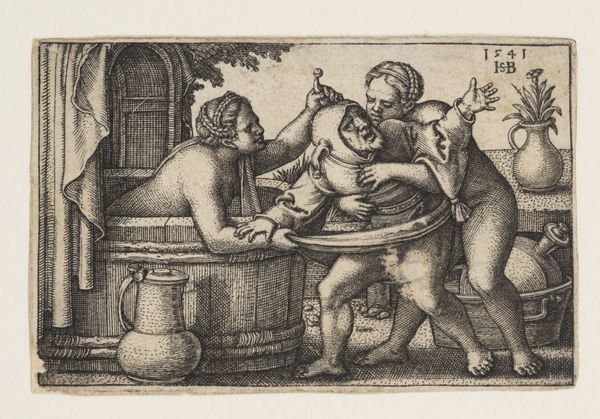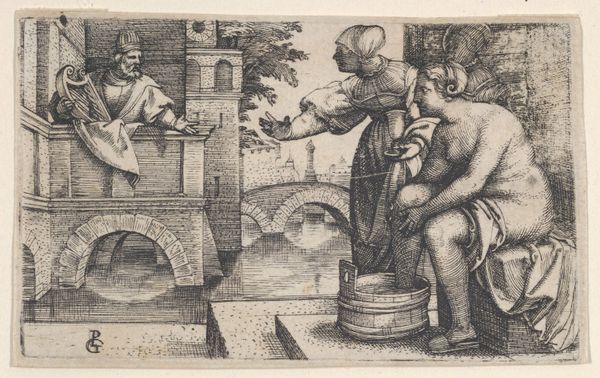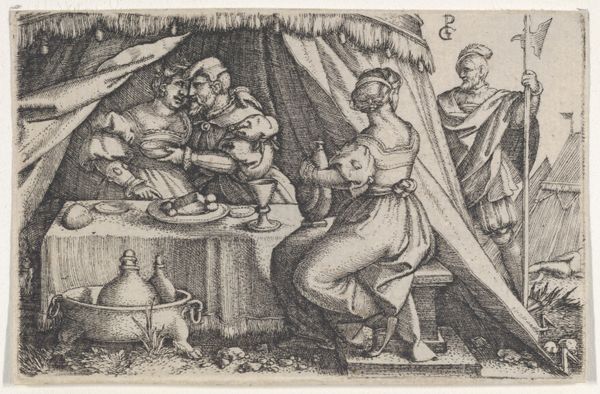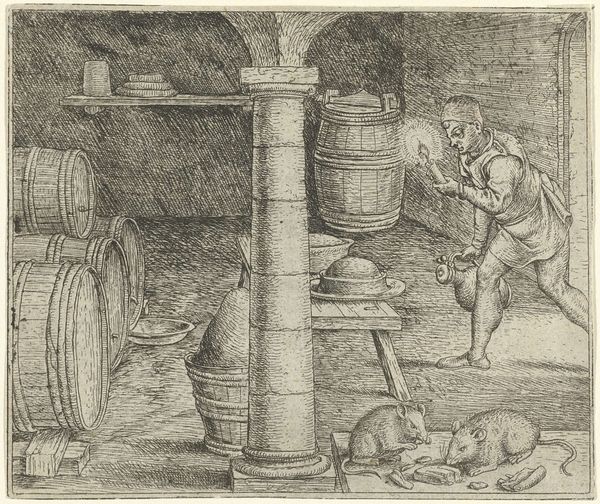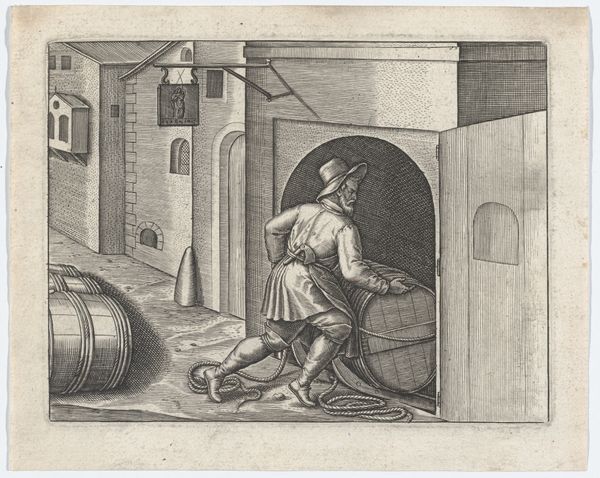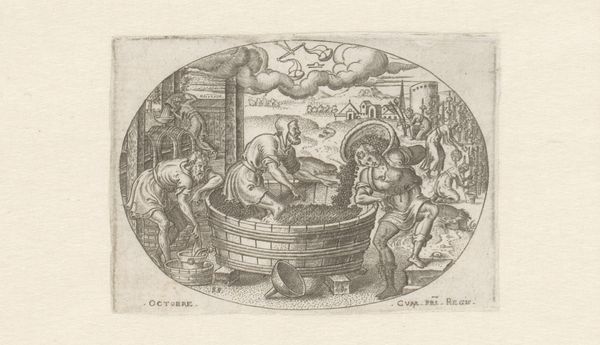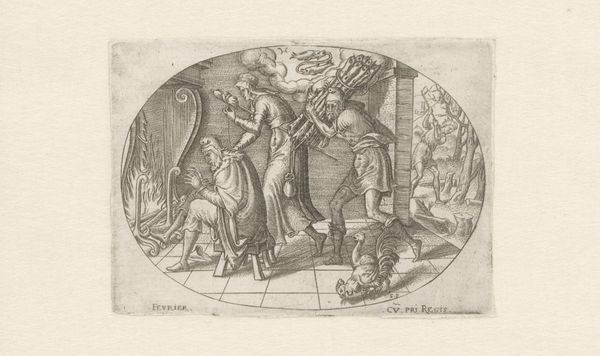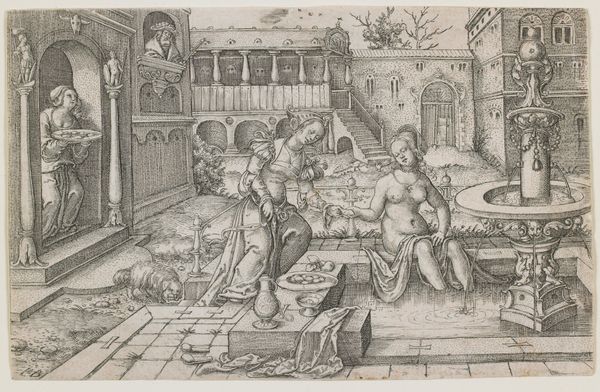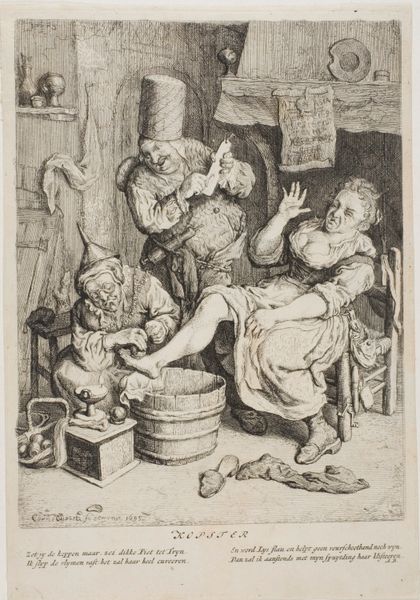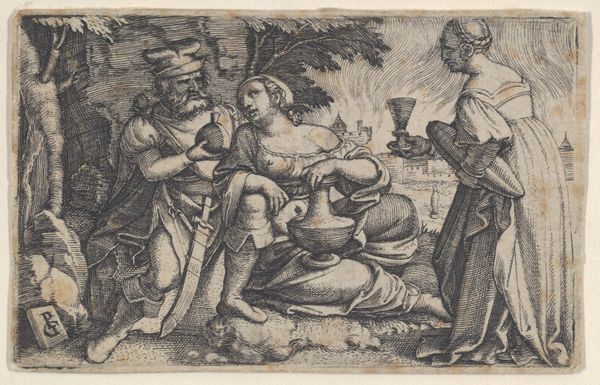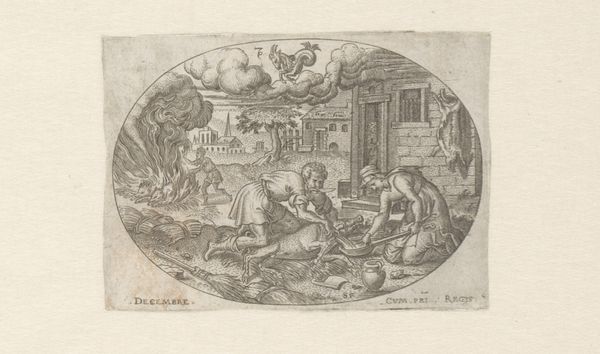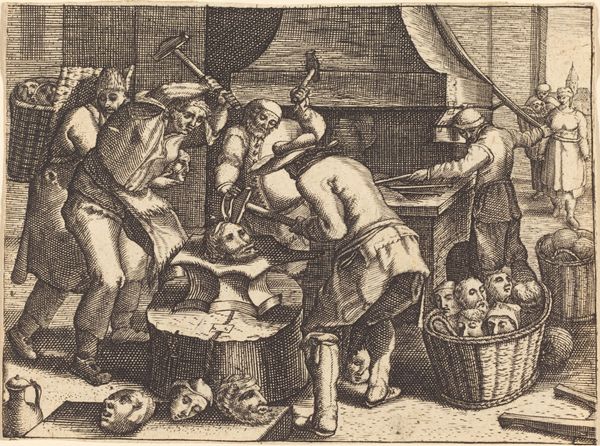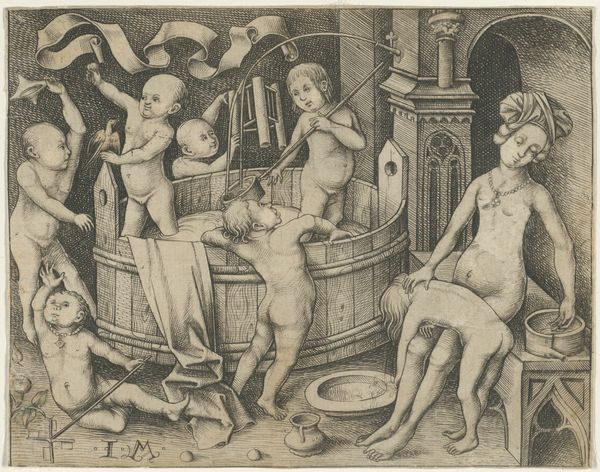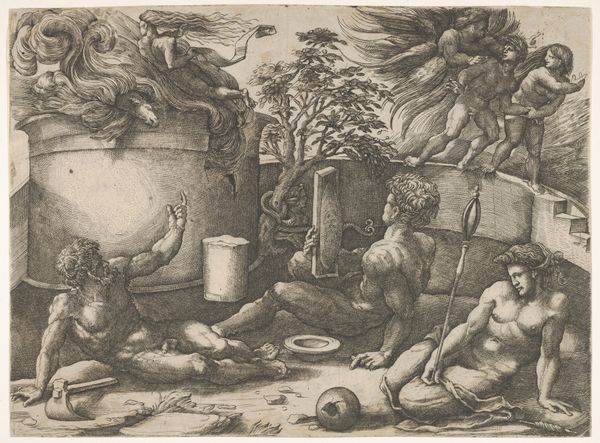
drawing, print, engraving
#
pencil drawn
#
drawing
# print
#
figuration
#
11_renaissance
#
history-painting
#
northern-renaissance
#
nude
#
engraving
Dimensions: Sheet: 1 7/8 × 3 1/16 in. (4.8 × 7.7 cm)
Copyright: Public Domain
Georg Pencz made this tiny print of David and Bathsheba sometime in the mid-16th century. It's an etching, meaning that the artist covered a metal plate with a wax-like ground, drew his composition with a needle to expose the metal, and then bathed the plate in acid. The incised lines then hold ink, which is transferred to paper in a printing press. The real skill here is Pencz’s deft handling of line. With varying densities, he suggests light, shadow, and even the textures of flesh and stone. Think about the labor involved: each line carefully considered and inscribed by hand, a testament to the value placed on skilled craftsmanship at the time. This wasn’t just technical virtuosity, though. The story of David and Bathsheba, with its themes of power, desire, and moral failing, was highly relevant to the social dynamics of Pencz’s era. By rendering it in a relatively accessible medium like printmaking, he could disseminate this narrative widely, inviting commentary on the relationship between rulers and their subjects. The very act of making the artwork becomes a form of social commentary.
Comments
No comments
Be the first to comment and join the conversation on the ultimate creative platform.
